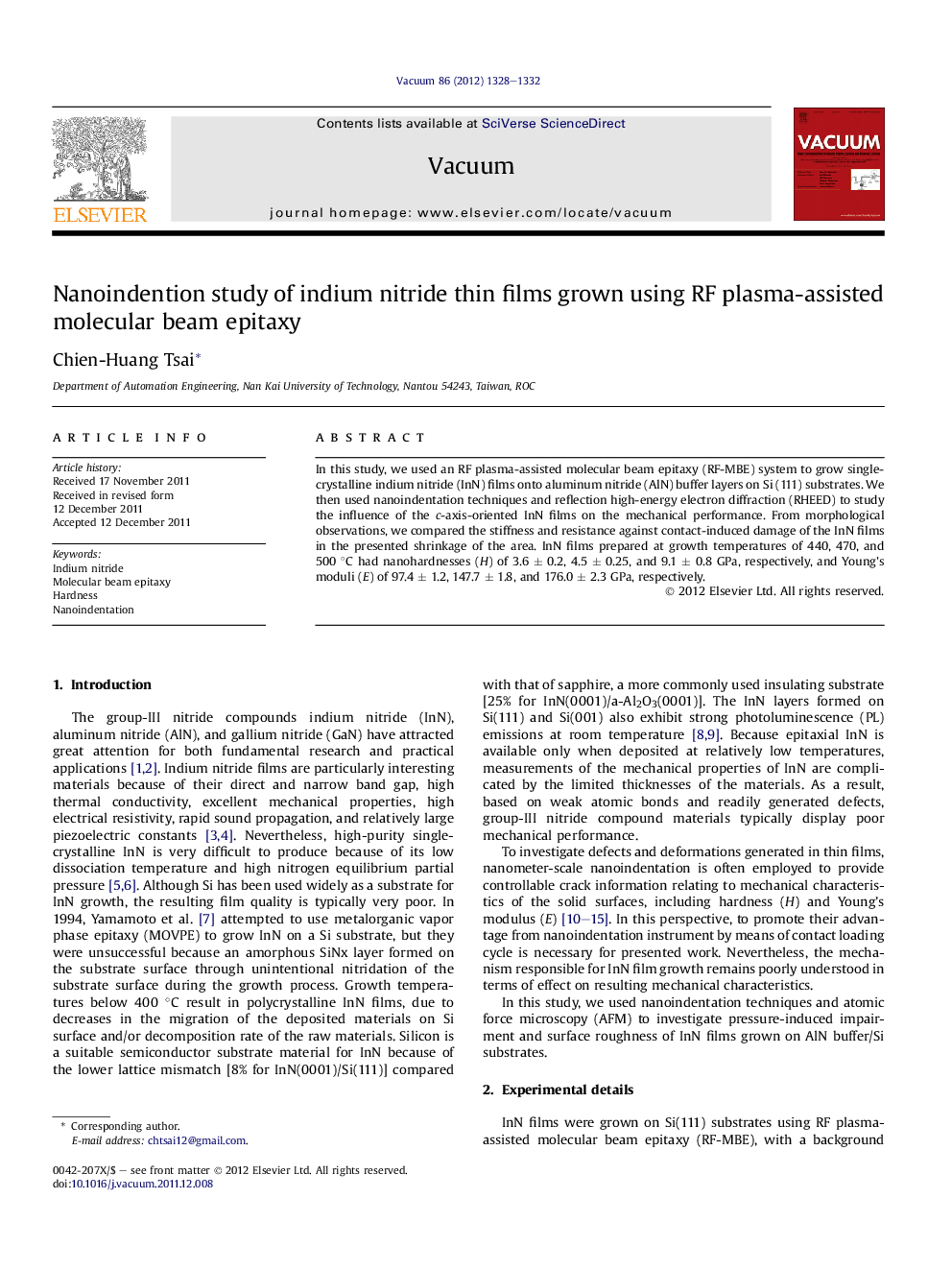| Article ID | Journal | Published Year | Pages | File Type |
|---|---|---|---|---|
| 1690724 | Vacuum | 2012 | 5 Pages |
In this study, we used an RF plasma-assisted molecular beam epitaxy (RF-MBE) system to grow single-crystalline indium nitride (InN) films onto aluminum nitride (AlN) buffer layers on Si (111) substrates. We then used nanoindentation techniques and reflection high-energy electron diffraction (RHEED) to study the influence of the c-axis-oriented InN films on the mechanical performance. From morphological observations, we compared the stiffness and resistance against contact-induced damage of the InN films in the presented shrinkage of the area. InN films prepared at growth temperatures of 440, 470, and 500 °C had nanohardnesses (H) of 3.6 ± 0.2, 4.5 ± 0.25, and 9.1 ± 0.8 GPa, respectively, and Young’s moduli (E) of 97.4 ± 1.2, 147.7 ± 1.8, and 176.0 ± 2.3 GPa, respectively.
► We used an RF-MBE system to grow single-crystalline InN. ► A high growth temperature enhanced the H and E values of the InN films. ► H and E was depended on the strongly c-axis-oriented In–N bond.
